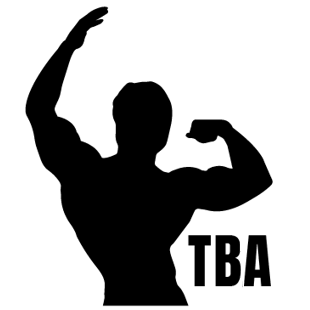The Golden Era introduced a lot of new training principles. Bodybuilders began to move away from full-body workouts toward a push-pull-legs (PPL) split. The PPL split has stood the test of time and is still one of the most popular splits in modern bodybuilding.
PPL is generally programmed as a 4-day split: 3 days on, 1 day off.
Day 1: Push (Chest, Shoulders, & Triceps)
Day 2: Pull (Back & Biceps)
Day 3: Legs (Quads, Hamstrings, & Calves)
Day 4: Rest or Active Rest (Cardio)
Only Requires 3 Days
PPL is adaptable to the number of days you can train. If your schedule only allows 3 training days a week, PPL is perfect. Train one day and rest the next day. For more experienced lifters who want to train 6-days a week, you can run the programme twice. Train 3 days on and 1 day off.
Unlike most training splits, the PPL split allows you to miss days here and there. As long as you hit all 3 workouts in a week, you’ve covered every muscle group.
More Frequent Training
Beginners will see enough progress with three sessions a week. The split allows experienced lifters to run it twice over 6 days.
Natural bodybuilders should aim to train each muscle group 2-3x a week. Research has shown this is optimal for muscle growth. Enhanced bodybuilders can train each muscle group less often. Research shows you’re better off training chest twice a week with reduced volume than once a week all out.
Training each muscle group once or twice a week makes a huge difference. At the end of the year that’s a difference between 52 and 104 workouts per muscle group.
Allows for Variation
The PPL split allows for a lot of variation in your workouts. Push day generally consists of training the chest, shoulders, and triceps. For one workout you can focus on chest development. For the second workout, you can focus on the shoulders first.
The PPL split allows you to program around lagging body parts. If your shoulders are lagging, train them first.

Longer Sessions
If you’re used to body-part training, moving to PPL may see your workouts getting longer. If you train one muscle group per workout you’re used to a high volume. The PPL split won’t give you the same feeling of completely breaking down one muscle group.
The goal is to stimulate the muscle, break down some muscle fibres, and move on. Leave something in the tank because you’re training the same muscle again in a few days. If you’re following the PPL split proper programming is important.
The Pump
A common complaint around the PPL split is that it’s harder to maintain a pump. As you’re hitting each muscle group with less volume, you’re less likely to feel a pump. You should still be isolating the muscle but the pump will be less intense.
Requires Proper Programming
The biggest reason beginners start out with body part splits is because it’s easy to get right. You pick a body part and you train it. Repeat each day.
Full-body and PPL routines need proper programming. Each workout needs to hit several targeted muscle groups. It’s easy to forget and get lost in the workout. If you’re looking to build a balanced physique, follow a programme.
Programming your PPL routine will ensure body parts get equal attention. A well-designed programme will alternate the order of muscles trained. If you always train one muscle group at the end, they will never grow to their potential. If you only train triceps when you’re fatigued, they’ll never see massive growth.
PPL routines date back to the beginning of bodybuilding. Arnold and the Golden Era bodybuilders often used this approach. Whilst it has many benefits, consistency is most important. Consistency is king with all routines. A bad programme done consistently is better than a good programme done rarely.


